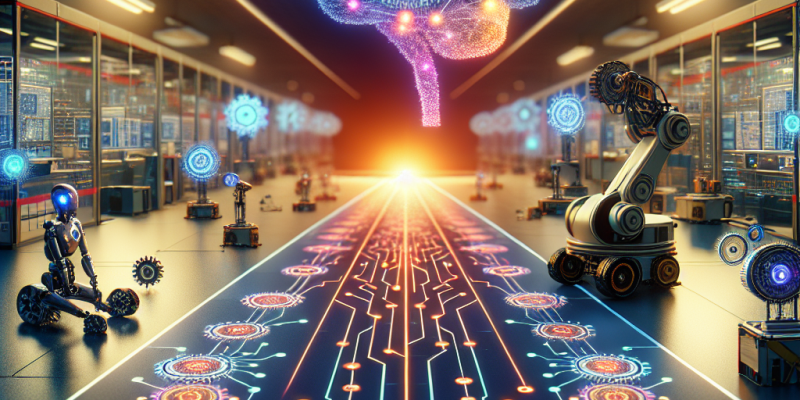Unlocking Potential: The Role of AI in Driving Automated Solutions

Unlocking Potential: The Role of AI in Driving Automated Solutions
In an era defined by rapid technological advancement, artificial intelligence (AI) stands out as a transformative force shaping industries and redefining the potential of automated solutions. The synthesis of AI capabilities with automation processes is not merely an enhancement; it represents a paradigm shift that unlocks unprecedented efficiencies, streamlines operations, and fosters innovative approaches to longstanding challenges. This article explores how AI is driving automated solutions and what this means for businesses and society at large.
The Intersection of AI and Automation
To understand the role of AI in automation, it’s essential to define both terms. Automation refers to the use of technology to perform tasks without human intervention, while AI encompasses the simulation of human intelligence in machines, enabling them to learn, reason, and make decisions. Together, they create intelligent automation systems that are capable of performing complex tasks, often with greater accuracy and speed than their human counterparts.
AI enhances automation through mechanisms such as machine learning, natural language processing, and computer vision. These technologies allow automated systems not only to execute predefined tasks but also to adapt to new situations, analyze patterns from vast datasets, and even respond to unstructured inputs. For example, chatbots equipped with natural language processing can handle customer inquiries with remarkable sophistication, providing a personalized experience without human intervention.
Enhancing Operational Efficiency
One of the most significant benefits of employing AI in automated solutions is the improvement in operational efficiency. By automating routine tasks, companies can reduce human error, minimize delays, and allocate resources more effectively. AI can analyze workflows to identify bottlenecks, ensuring that automated processes run smoothly and efficiently.
In manufacturing, predictive maintenance powered by AI can foresee equipment failures before they occur, allowing for maintenance to be scheduled proactively rather than reactively. This not only reduces downtime but also extends the lifespan of equipment, driving cost savings and enhancing productivity.
Driving Innovation and Adaptability
In today’s fast-paced business landscape, adaptability is crucial. AI-powered automation allows organizations to pivot quickly in response to changing market conditions and customer demands. For instance, AI algorithms can be deployed to analyze consumer behavior and preferences in real-time, enabling businesses to adjust their offerings and marketing strategies with agility.
Moreover, intelligent automation fosters innovation by freeing human employees from monotonous tasks, allowing them to focus on higher-value work. This shift encourages creativity and critical thinking, leading to the development of new products and services that can drive economic growth.
Improving Decision-Making
AI’s ability to process vast amounts of data at lightning speed enhances decision-making capabilities across various sectors. Automated systems can reason through complex datasets, uncovering insights that would take humans considerably longer to discern. In finance, for instance, algorithms can evaluate market trends and make investment decisions based on predictive analytics, helping investors capitalize on emerging opportunities in real time.
Additionally, AI-driven automated solutions can minimize biases in decision-making processes. By relying on data rather than intuition or subjective judgment, organizations can make more informed, rational decisions that ultimately lead to better outcomes.
Social Implications and Ethical Considerations
While the potential of AI-driven automation is immense, it comes with significant ethical and social considerations. As organizations increasingly adopt automated solutions, concerns about job displacement and the digital divide have arisen. It is crucial for businesses and policymakers to address these challenges proactively, ensuring that the benefits of automation are distributed equitably.
Investing in workforce retraining and education can help prepare workers for the changing job landscape. By equipping employees with the skills necessary to thrive in an AI-augmented environment, organizations can leverage the strengths of both humans and machines, fostering a collaborative rather than adversarial relationship.
Conclusion
The integration of AI in driving automated solutions offers a wealth of opportunities that can enhance productivity, foster innovation, and improve decision-making. As we continue to unlock the potential of AI, it is vital to balance technological advancement with ethical considerations and social responsibility. By navigating these challenges thoughtfully, businesses can harness the power of intelligent automation to not only achieve operational excellence but also contribute positively to the larger community and economy.














